The Cornell Lab Bird Academy › Discussion Groups › Nature Journaling and Field Sketching › Focusing on Your Subject – Blind Contour Drawing
-
It wasn´t easy because in many years of drawing, I never considered to do it with this method, and yes, it´s true, helps you focus exclusively on the subject, concentrate and appreciate the details slowly, but feels, or my personal perception, was a difficult connection between eye and hand at the same time, but I will put it into practice, its a very interesting, healthy and surprising experience, especially when you see the result.

-
yes- as funny as they look - it did help me stay focused on the subject!


-
This was a huge challenge! I found two tricks that helped: 1) I noticed when Liz was drawing she kept the fingers of her left hand on the notebook near the spine. I put my thumb and first two fingers down on the edge of each page before starting, and used them to "feel" where the top, bottom and a central part of the drawing should be. For instance, the top, bottom and end of the nose of the springbok. 2) I closed one of my eyes, and that helped me immensely with staying focused on the contour and not getting lost looking around at different places on the object. Not particularly proud of any of these drawings but I will keep practicing.
-

-
You’re right, funny! My newt at least had 3 legs, but my songbird looked like a dinosaur and my flower - we’ll sort of, but my Springbok at least had spring!
 my springbok has spring, and 4 legs!
my springbok has spring, and 4 legs! -
The urge to criticize wasn’t as strong bc of how kind the professor was to herself. I found myself having fun with how weird it looked and joyful about some good spots in the drawings. An exercise in managing the urge to look as well having self compassion!


-

-
These exercises are some of the best of my first year of really exploring nature in all its glory! I laughed at some of my drawings, and was amazed by a couple that really came out recognizable. I'm looking forward to doing this just out in nature and even in my backyard.
-
I definitely had to stay focused on the subject. I made an effort to find something I liked in each drawing. The plants I tried were too complex to have anything resembling the images on my page. I found it challenging to have proportions once i was working on the "second half" of an image; I would over shoot or overlap. Not sure what is going on there, I don't seem to be able to hold the place in space of the parts of the image. example, the two sides of the Springbok's legs.
-
This was a very difficult exercise for a perfectionist! I could not get anything to look even vaguely like that sunbird, though I tried 3 or 4 times. My newt, bird of paradise, and springbok ended more representational. I don't know if this is something I would do for pleasure, but I understand the point of the exercise.

-
Yikes! This was a challenge. I can see this would be helpful in the field when you don’t have much time to capture the image. Just get the shape and then the details as much as possible considering the subject may be passing thru
-
I think that is what I mostly do when I am sketching something that is moving. I agree this was an UFDA hard to do. I tried it on a model bulldog pup. The drawing looked hilarious as a whole. When looking at it on just the part I did not bad. I asked the barista what she thought, not trusting my own judgement. She said she could see it. whew/ I think if we then went to shading and adding it might look like the subject?
-
-
It was really hard not to look. Not sure if it helped my focus. I was hurrying so I could look. The drawings for the most part turned out better than I thought they would. I did two tries on the Springbok, though.
-
1. I had done this exercise before in Liz's Bird Drawing workshop. I realized that I wasn't following the contour with my eye, I was jumping ahead and drawing the shape that I saw. That was a big difference. It definitely helped me stay focussed on my subject
-
I found blind contour drawing helpful for capturing detail on the subject, but more difficult to capture scale and proportion.
-

 I found the blind contour drawing quite challenging as I like to be able to look back and forth but honestly I did better than I expected I was. I’m actually impressed for the most part that my drawings resemble what I was attempting to replicate. I did notice that well I was doing this I was able to focus more on the pictures more and take in more details.
I found the blind contour drawing quite challenging as I like to be able to look back and forth but honestly I did better than I expected I was. I’m actually impressed for the most part that my drawings resemble what I was attempting to replicate. I did notice that well I was doing this I was able to focus more on the pictures more and take in more details. -
I tried to stay loose and work rather quickly. I think -seeing some of the posts and even my own efforts -blind contour drawing creates an interesting art style! I wonder if what you are most familiar with is easier. The bird and lizard, which I have drawn before came out closest to recognizable!
-
I find it somewhat frustrating to do blind contour drawing. I have to force myself not to reorient my drawing with the object. I'm sure if you keep practicing you'll get better, but I do like to glance at my drawing now and then. Doing contours of the four photographs was definitely easier than drawing a contour of the three dimensional flower I chose for my outside subject. (A slight wind didn't help!)


-
Scarey for sure! But fun also. Definitely funny at times but also some success! Who knew you could do this!

-

-
my first experience was terrible. I made strange drawings but I noticed I nailed the lizard on the feet and the sunbird on the head
-
I tried the blind contour technique with the four subjects provided in the very nice photographs of the newt, the Sun Bird, the Bird of Paradise, and the Springbok. It was difficult and I tried my best to concentrate. I believe I did the best with Sun Bird and the Bird of Paradise. I drew arrows to indicate the parts that I thought I did best with the blind contour experience.

-
In retrospect, I might try a live plant blind contour to compare with the subjects from a photograph.
-
-
Contour drawing challenges my need to be right. It is a difficult exercise for me but worthwhile because of the challenge.
-
It was difficult to not look at the paper and just stay focused on the subject. I had to draw real slow to make myself stay focused on the subjects.

-

 My first try with contour drawing was an unusual experience. I decided perhaps drawing and shading the shapes while looking at them would help. So with my second try of blind contour drawing I felt it came out pretty good, except the springbok.
My first try with contour drawing was an unusual experience. I decided perhaps drawing and shading the shapes while looking at them would help. So with my second try of blind contour drawing I felt it came out pretty good, except the springbok. -

Read More:
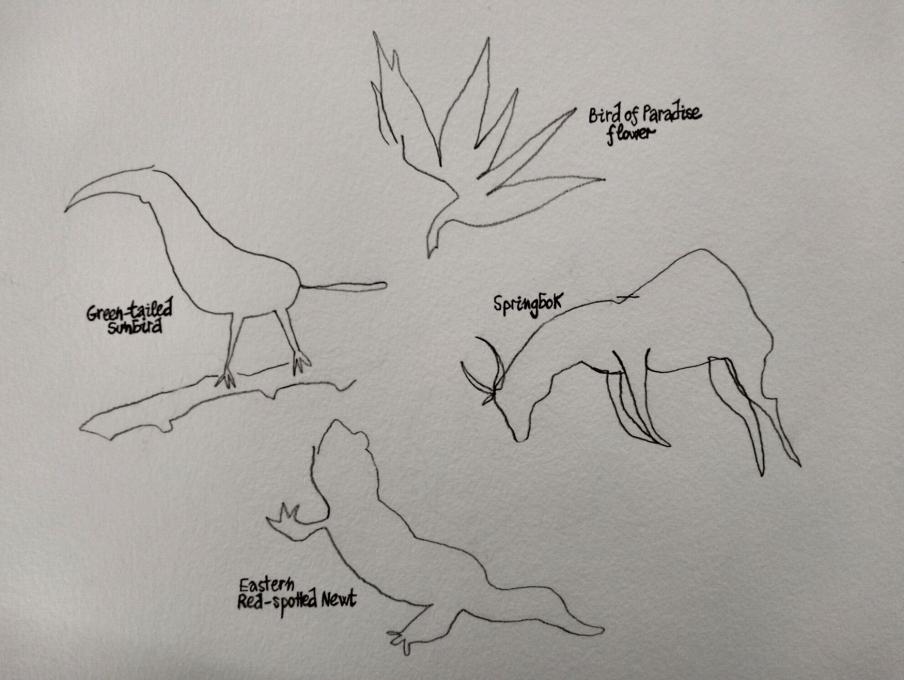
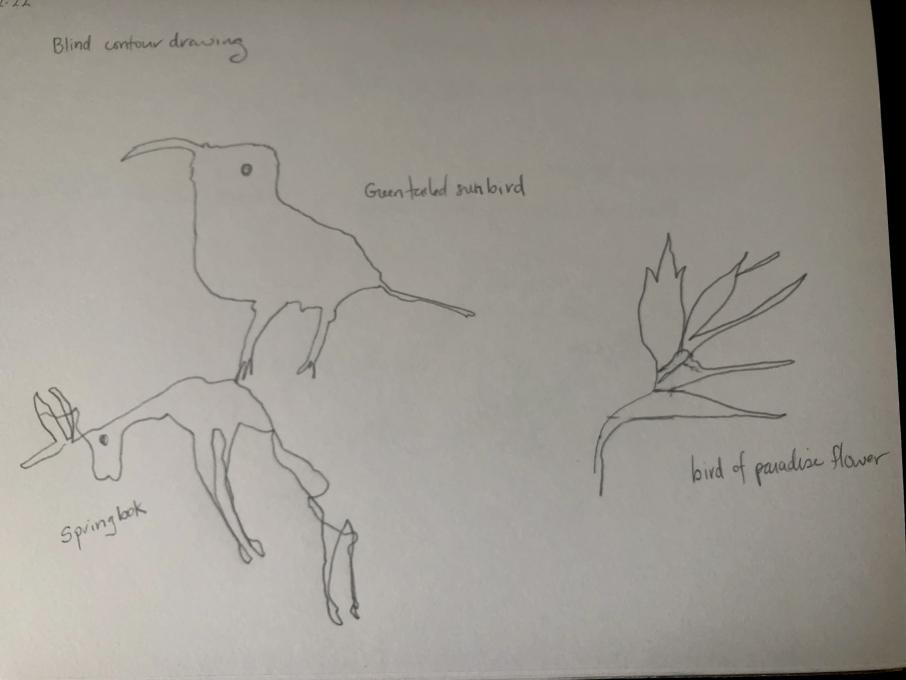
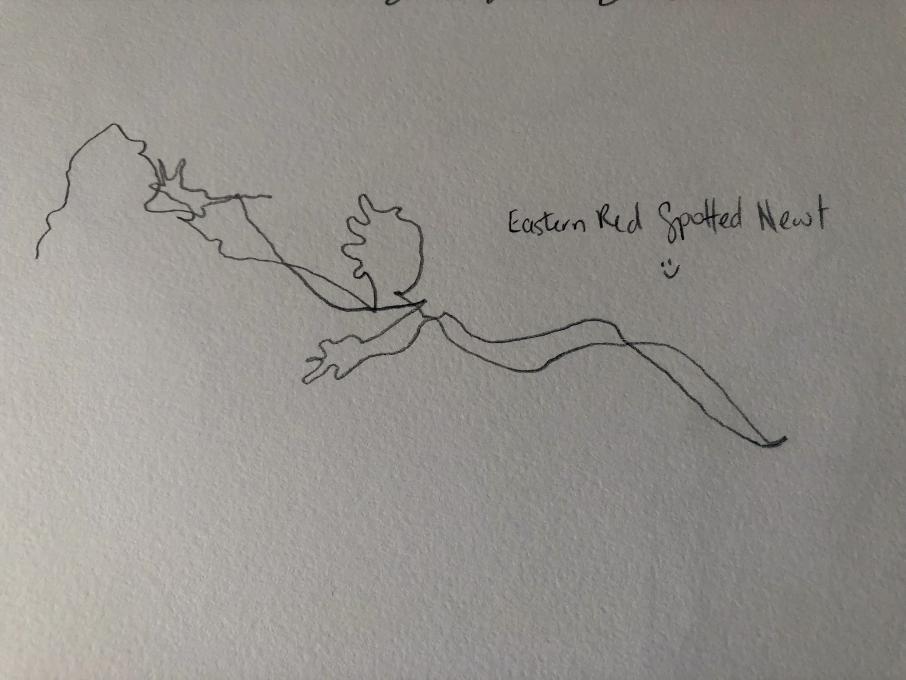
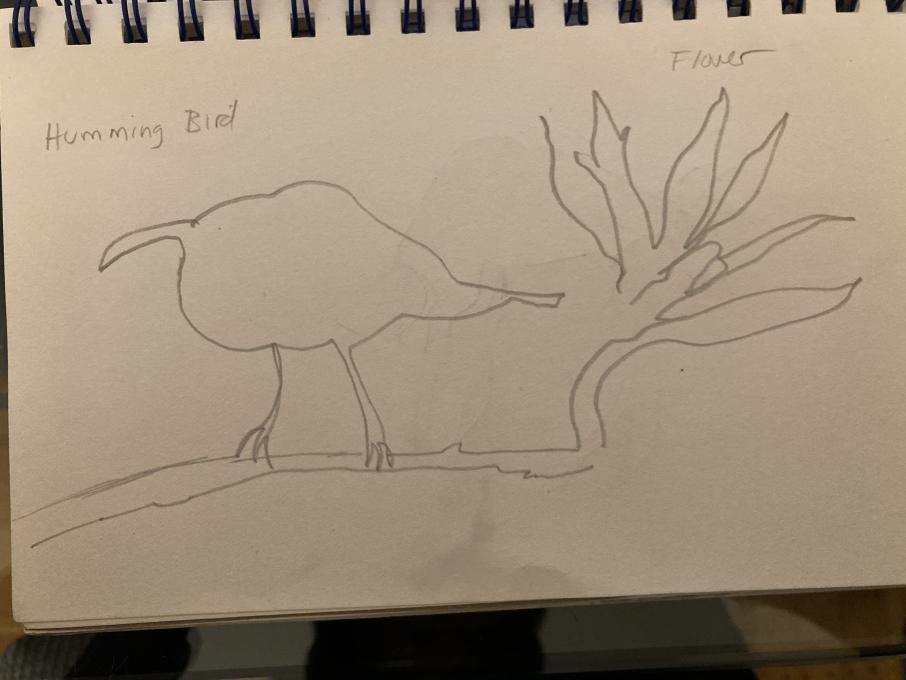
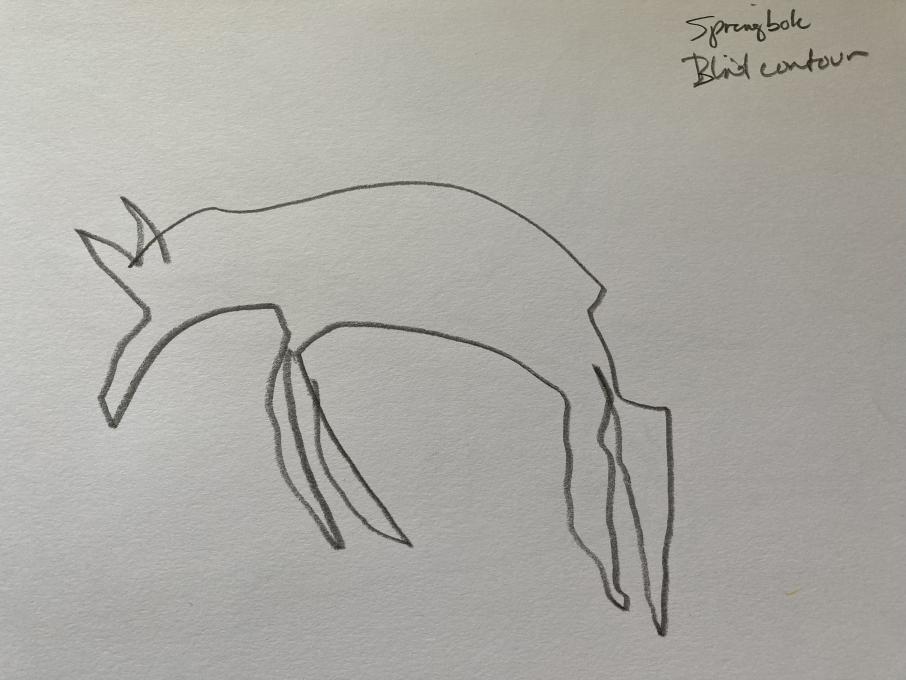 my springbok has spring, and 4 legs!
my springbok has spring, and 4 legs! 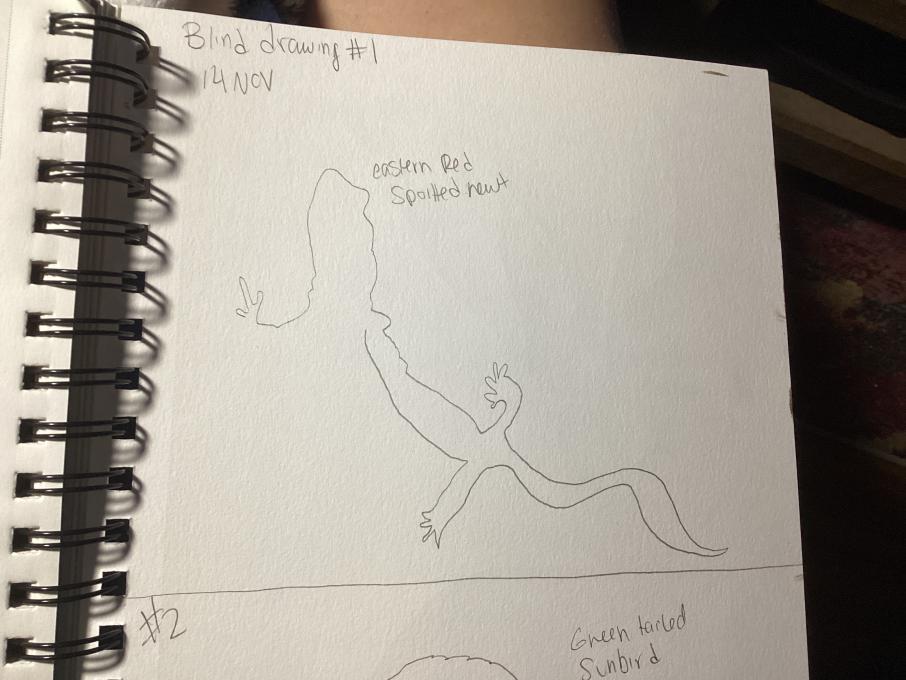
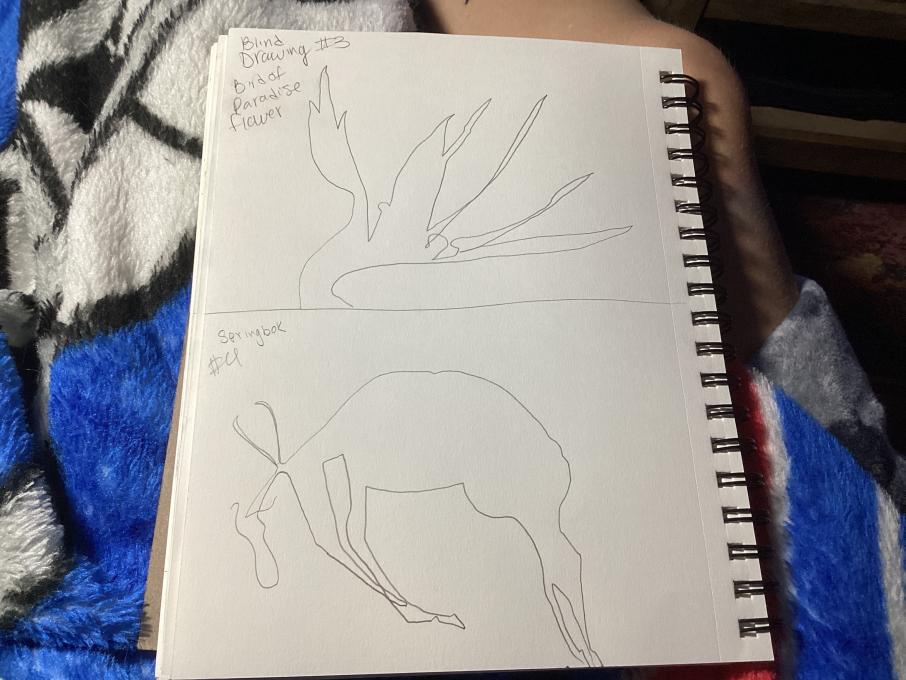
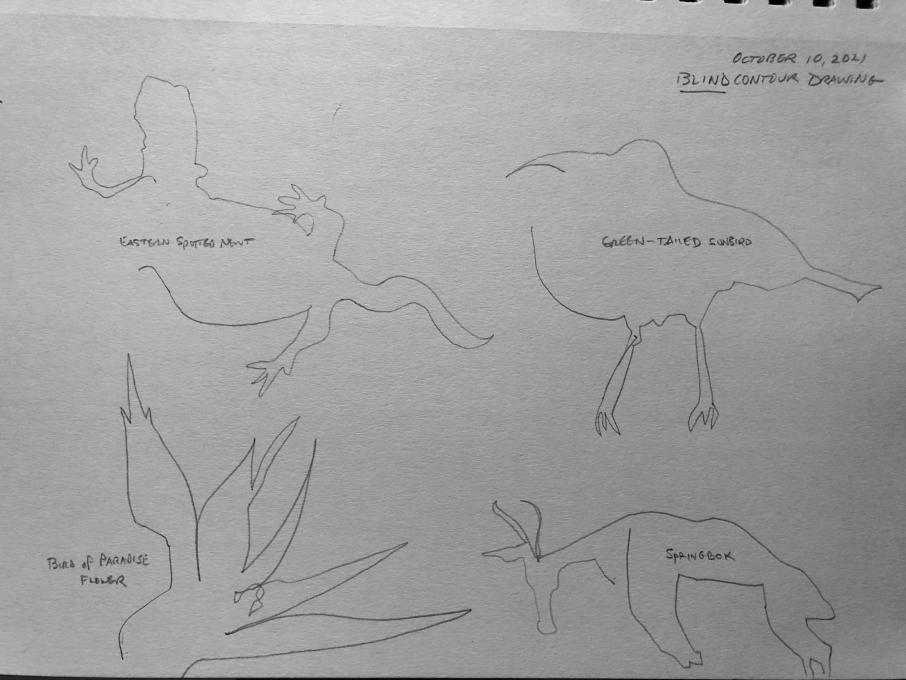

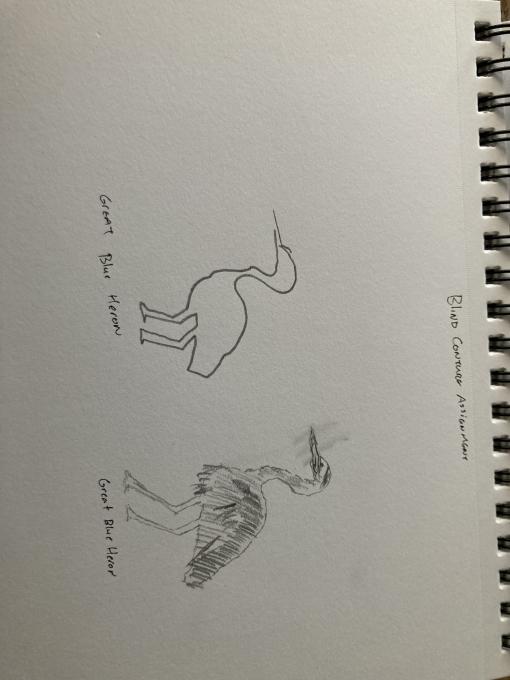
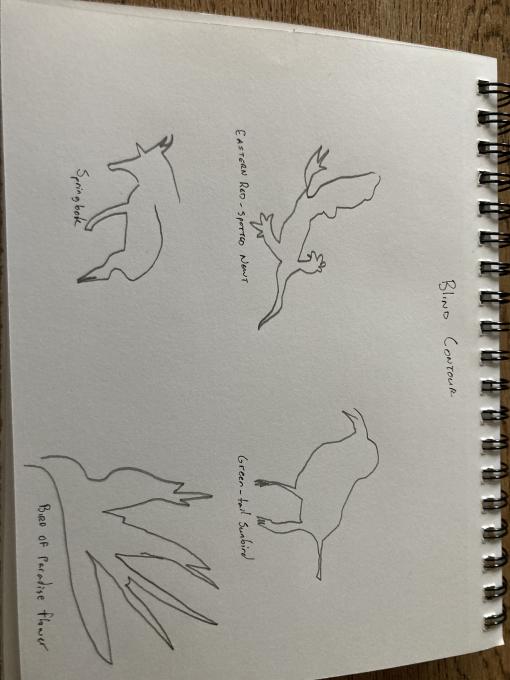 I found the blind contour drawing quite challenging as I like to be able to look back and forth but honestly I did better than I expected I was. I’m actually impressed for the most part that my drawings resemble what I was attempting to replicate. I did notice that well I was doing this I was able to focus more on the pictures more and take in more details.
I found the blind contour drawing quite challenging as I like to be able to look back and forth but honestly I did better than I expected I was. I’m actually impressed for the most part that my drawings resemble what I was attempting to replicate. I did notice that well I was doing this I was able to focus more on the pictures more and take in more details. 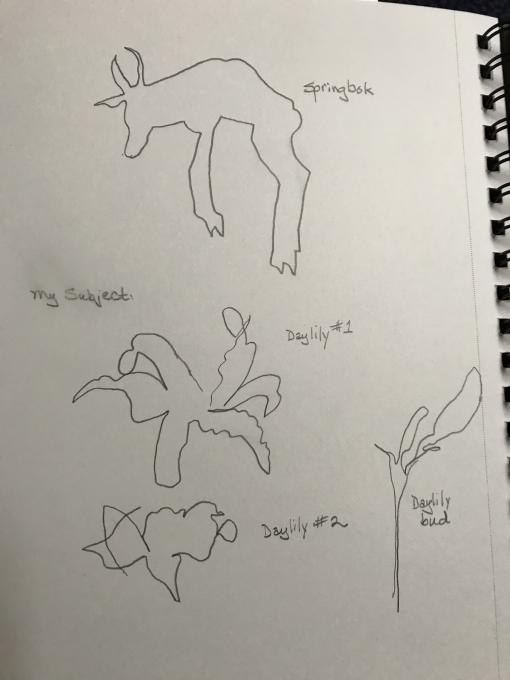
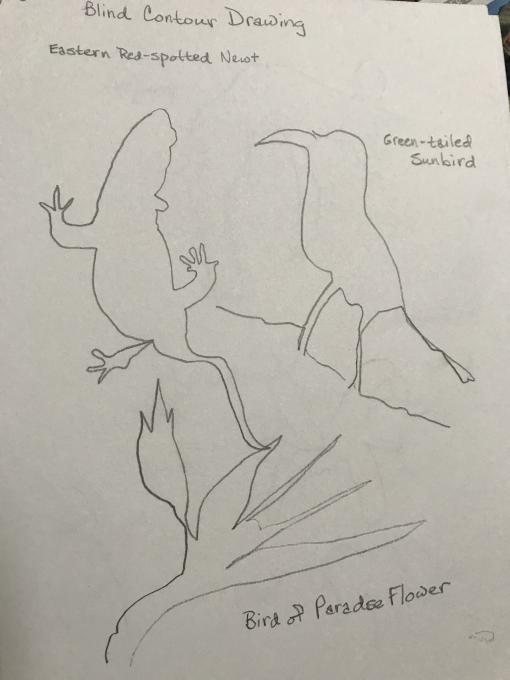
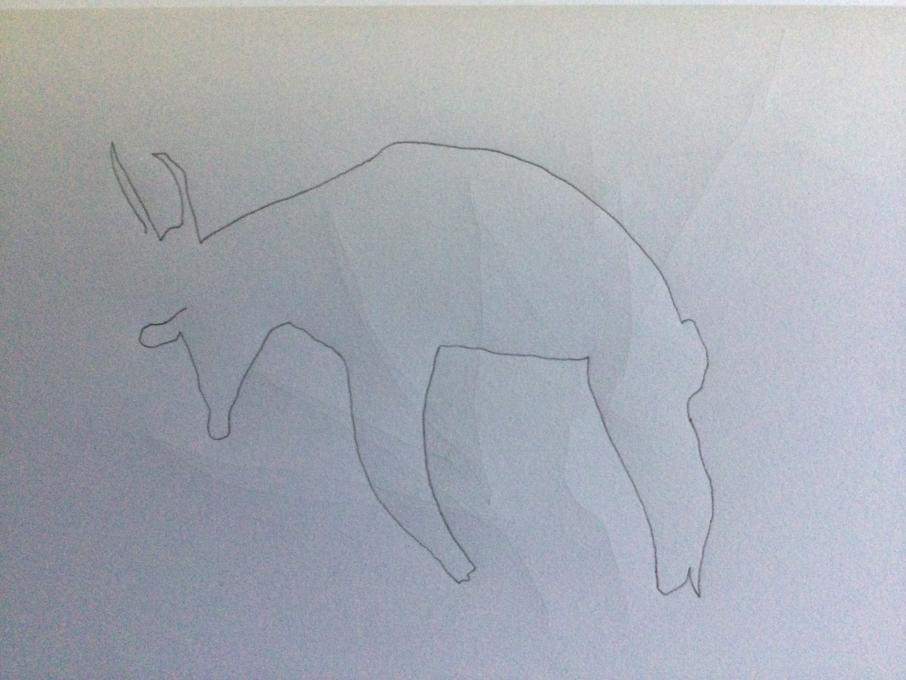
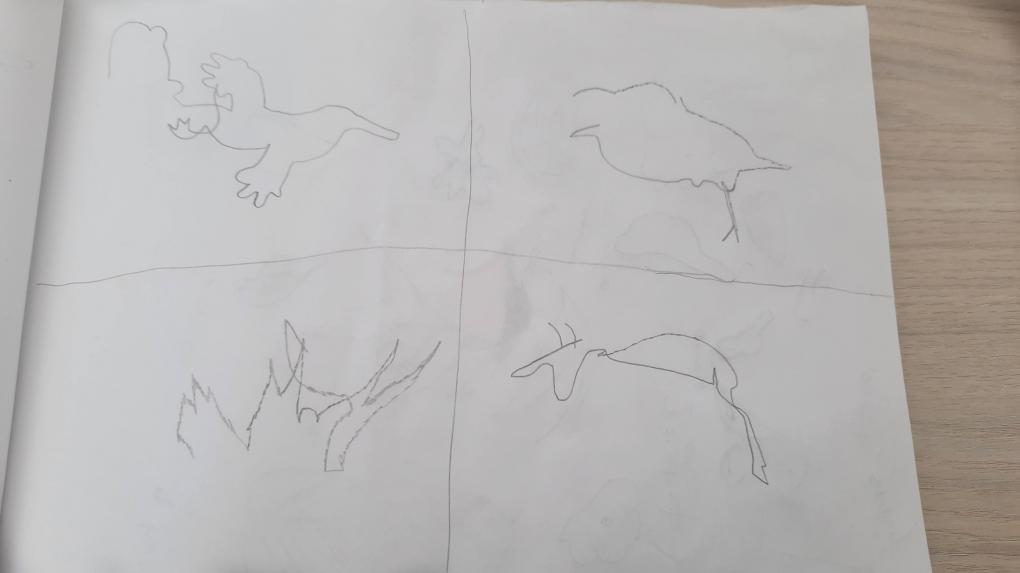
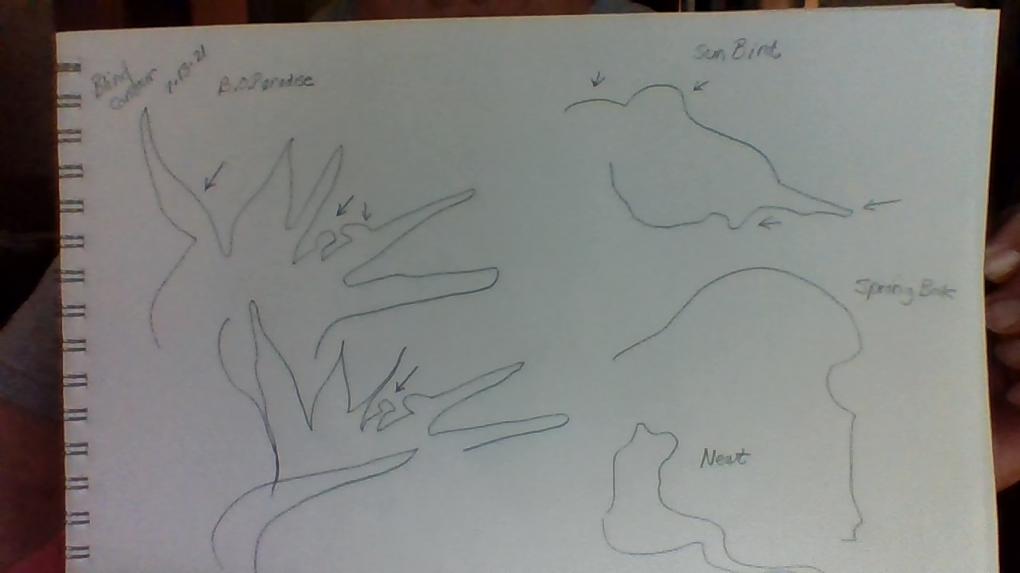
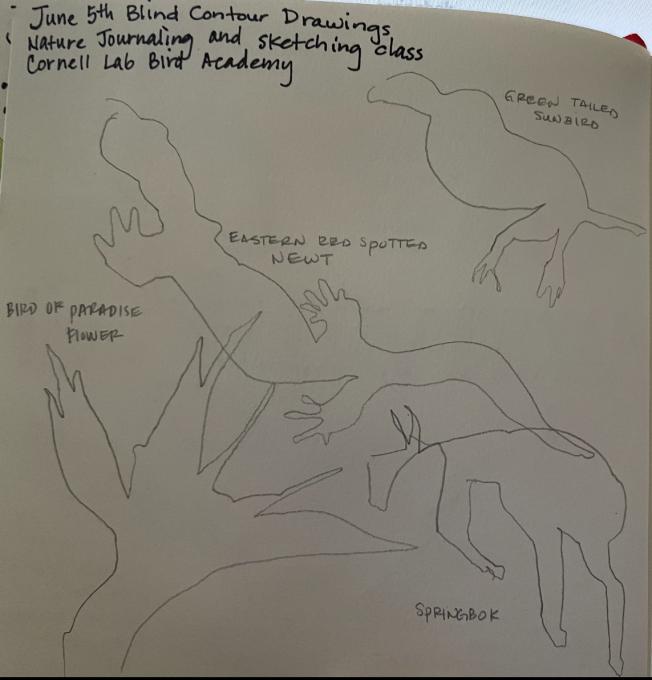
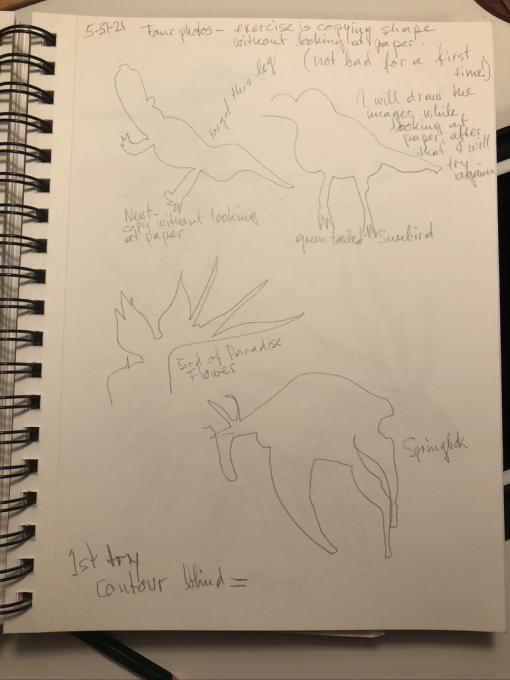
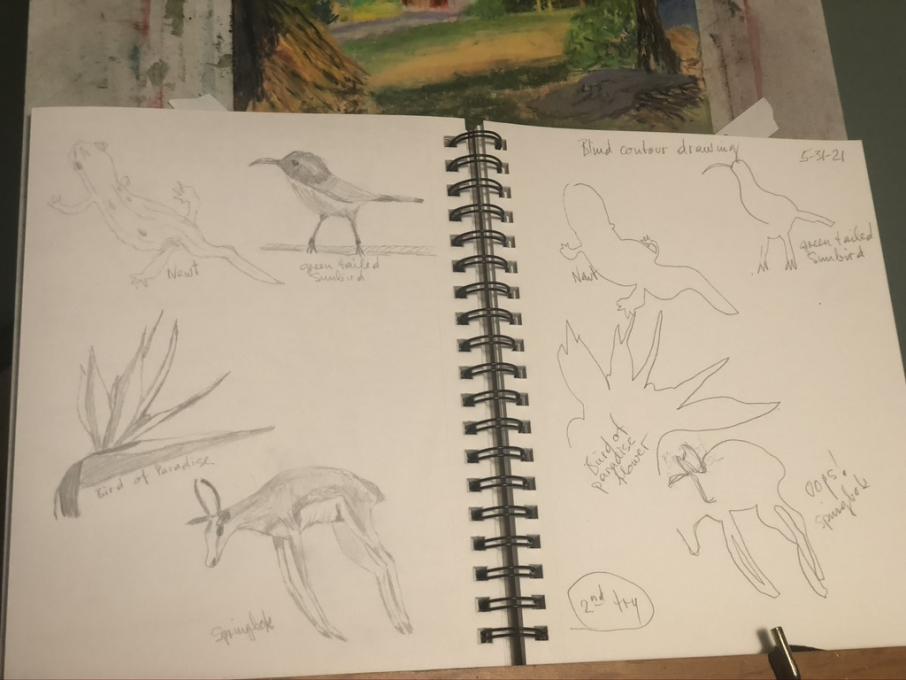 My first try with contour drawing was an unusual experience. I decided perhaps drawing and shading the shapes while looking at them would help. So with my second try of blind contour drawing I felt it came out pretty good, except the springbok.
My first try with contour drawing was an unusual experience. I decided perhaps drawing and shading the shapes while looking at them would help. So with my second try of blind contour drawing I felt it came out pretty good, except the springbok. 